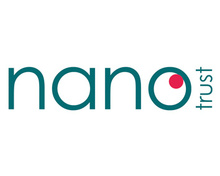4. NanoTrust-Konferenz
Ansätze der Risikobewertung und des Risikomanagements der Nanotechnologien (Originaltitel der englischsprachigen Konferenz: Approaches to Risk Assessment and Risk Management of Nanotechnologies, 23.9.2010)
Datum:
Dienstag, 23. September 2010, 09:00 bis 16:45 Uhr
Ort:
ÖAW – Österreichische Akademie der Wissenschaften
1010 Wien, Dr. Ignaz Seipel-Platz 2
Sitzungssaal (1. Stock)
The field of nanotechnology is characterized by lack of knowledge regarding risk assessment and risk management. Certain knowledge gaps are based on unavailable information, others like human toxicological and ecotoxicological data of nanoparticles can be mitigated by research. While the previous NanoTrust-Workshops have concentrate on the identification of knowledge gaps this workshop is focused on decision making under uncertainty.
The workshop addresses the question: How to devise risk management strategies concerning the use of nanomaterials in light of insufficient knowledge?
Further questions which are discussed during the workshop are:
Are traditional methods in principle applicable to nanomaterials and if not, for what reasons?
What is the current situation regarding adaptation of traditional methods to the requirements of nanomaterials?
If the traditional methods can be modified to cover nanomaterials, what do (or will) these modifications pertain to?
In the case of fundamental problems with traditional approaches: Is it possible to develop new methods and procedures? Have such efforts already been undertaken? In what respect will new methods differ from previous ones?
If traditional methods are modified: What do these limitations imply for risk management (limited use)?
The workshop is going to address these questions from two sides. The first part of the workshop (morning session) is dedicated to a more general reflection on the situation described above. In the second part (afternoon sessions) we are going to present concrete examples where established risks management systems has been already partly adopted to nanotechnology.
